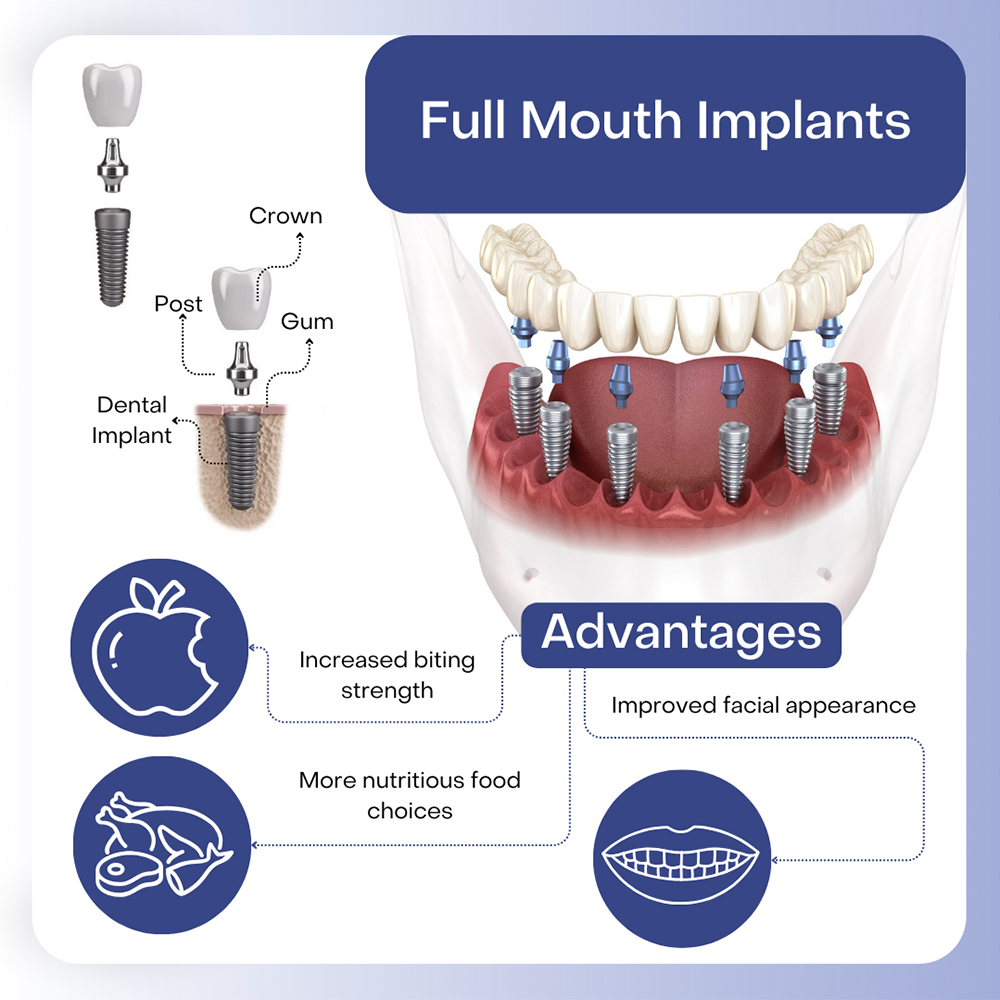4 Simple Techniques For Dental Sense
4 Simple Techniques For Dental Sense
Blog Article
Dental Sense for Dummies
Table of ContentsThe Facts About Dental Sense RevealedAn Unbiased View of Dental SenseThe Definitive Guide to Dental SenseFascination About Dental Sense
are clinical devices surgically implanted into the jaw to bring back a person's ability to eat or their appearance. They offer assistance for artificial (phony) teeth, such as crowns, bridges, or dentures. When a tooth is shed because of injury or condition, a person can experience problems such as rapid bone loss, faulty speech, or adjustments to chewing patterns that result in pain.Oral implant systems contain a dental implant body and oral implant joint and may also consist of a joint addiction screw. Dental implants. The dental implant body is surgically placed in the jawbone in location of the tooth's root. The dental implant abutment is generally connected to the dental implant body by the joint fixation screw and prolongs via gum tissues right into the mouth to sustain the affixed synthetic teeth
(https://anotepad.com/note/read/pydwx7ht)Structure of The Dental Implant System picking dental implants, speak to your oral provider concerning the prospective advantages and dangers, and whether you are a prospect for the procedure. Things to consider: Your total health and wellness is an essential aspect in determining whether you are an excellent candidate for oral implants, for how long it will take to heal, and how much time the dental implant may remain in place.
Cigarette smoking may affect the recovery procedure and decrease the long-lasting success of the implant. The recovery process for the dental implant body might take numerous months or longer, throughout which time you generally have a temporary joint instead of the tooth. the dental implant procedure: Carefully comply with the oral health directions given to you by your oral service provider.
What Does Dental Sense Do?
Implant failure can cause the demand for another operation to take care of or replace the dental implant system. Recovers the capability to chew Restores cosmetic look Helps keep the jawbone from reducing due to bone loss Maintains the wellness of the surrounding bone and gums Aids maintain adjacent (close-by) teeth secure Improves quality of life Damages to surrounding all-natural teeth during dental implant placement Injury to the surrounding cells throughout surgery, such as sinus perforation Injury during surgical procedure (as an example, fracture of surrounding jawbone) Insufficient function, such as seeming like the teeth do not bite with each other usually A feeling that the tooth is loose or turning in area arising from a joint screw loosening Implant body failure (looseness of the implant body) as a result of systemic infection, which might be most likely in clients with uncontrolled diabetes because of neighborhood infection in bone and periodontals sustaining the implant body as a result of delayed healing, which might be a lot more likely in individuals that smoke Trouble cleaning the periodontals around the dental implant, resulting in bad dental health Neglected periodontal condition Post-surgical tingling as a result of nerve impingement or damage Always inform health care suppliers and imaging professionals that you have oral implants prior to any kind of magnetic vibration imaging (MRI) or x-ray treatments.
FDA is not mindful of any unfavorable occasions reported for MRI or x-ray treatments with oral implants. Oral implants systems are normally made from products that adhere to worldwide consensus standards of the International Organization for Standardization (ISO) or ASTM International. These criteria have details of what makes a risk-free product.

An oral implant is a framework that changes a missing tooth. With screw-like tools, the doctor inserts a dental implant right into the jawbone, and it acts as an anchor for a man-made tooth, called a crown.
Dental Sense Can Be Fun For Everyone
Some people are not qualified for dental implant surgical treatment. It is for oral surgeons to operate individuals with: severe illnessuncontrollable metabolic diseasebone or soft cells illness or infectionIf these problems are fixed, an individual can have the surgical treatment. In, oral specialists refrain from operating individuals with: If people with any of the above go through dental implant surgery, there is a greater threat of the dental implant falling short.

Oral dental implant surgery is a personalized process. It's not the very same for everyone. Yet the adhering to gives a general overview of what you can expect your dental practitioner, oral cosmetic surgeon, periodontist or prosthodontist to do: Position the implant surgically. Give you time to heal. Attach the article and last crown, bridge or denture.
Next, your cosmetic surgeon will very carefully place the dental implant right into your jaw. Your specialist will certainly reposition your gums and shut the laceration with stitches. If your dental implant is near the front of your mouth, your dental practitioner will certainly make a momentary tooth for you to put on till you recover. By doing this, you will not have a gap in your smile while you recoup.
The Ultimate Guide To Dental Sense
During the healing stage, your jawbone ought to fuse to the dental implant. This important link process can take anywhere from 3 to 9 months.
As soon as your dental implant heals, your dental practitioner can connect the abutment (tiny connector article) and your last repair (crown, bridge or denture). This typically takes concerning one hour to finish and may need a second small surgical procedure. You shouldn't really feel any kind of discomfort during your oral implant procedure since your provider will utilize medication to numb your periodontals.
Report this page